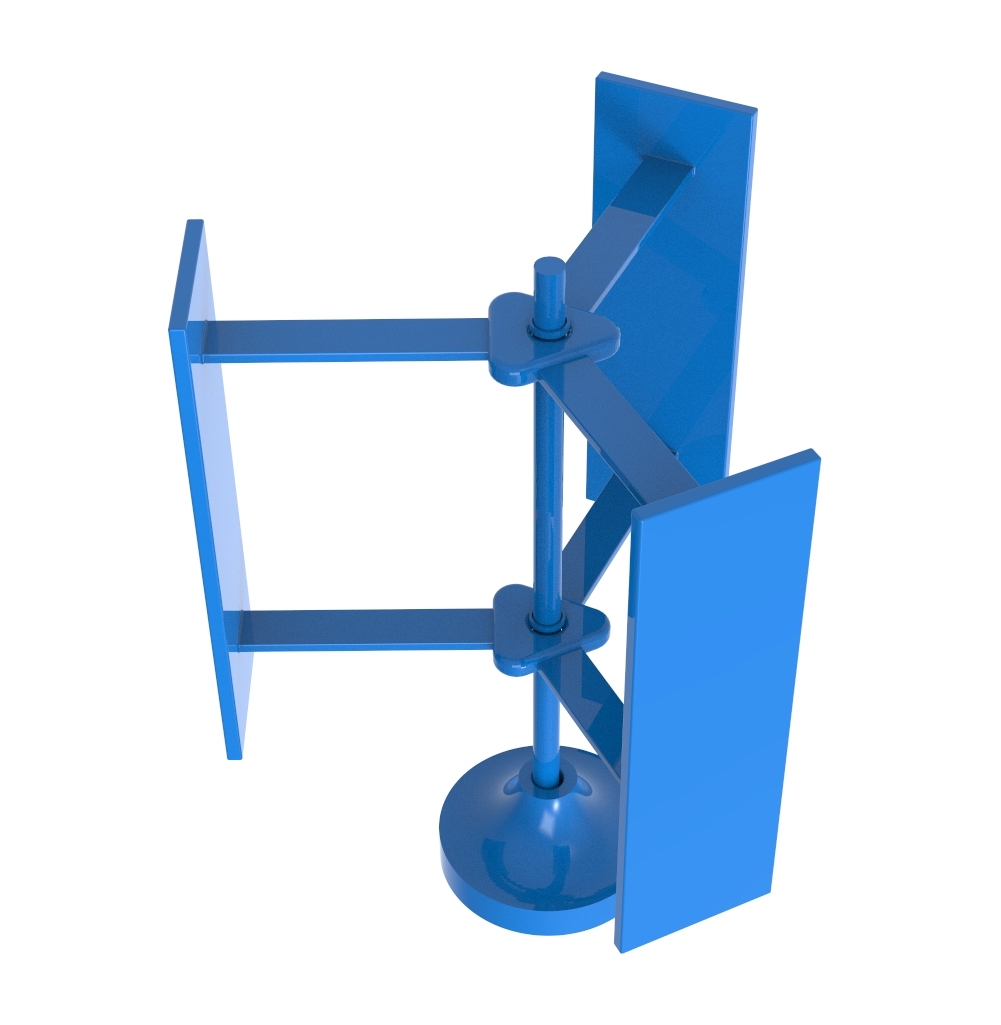
Technichal Specifications
How to use this exercise?
The model will be used to engage the students to inquiry about the science behind the construction of a vertical wind turbine.
Number of pieces of this exercise
10
General description
The model consists of 10 pieces printed in 3D.
The largest parts to be print are the blades. Each of them is made with three solids joined together that form a single piece. The blades are designed with a C-shape. These are linked to each other with two connectors.
The triangular shaped connectors are designed in such a way that inside them there is the space to link the blades. This structure, in turn, thanks to opposing holes in the connectors, is connected to the central axis formed by three pieces linked together.
Everything is blocked with a circular gasket placed under the last connector. In turn the entire structure is connected to a base to allow its balance.
Additional Material
Models used:
License Info
Attribution 4.0 International (CC BY 4.0) https://creativecommons.org/licenses/by/4.0/You are free to:
Share — copy and redistribute the material in any medium or format
Adapt — remix, transform, and build upon the material
for any purpose, even commercially.
Under the following terms:
Attribution — You must give appropriate credit, provide a link to the license, and indicate if changes were made. You may do so in any reasonable manner, but not in any way that suggests the licensor endorses you or your use.
No additional restrictions — You may not apply legal terms or technological measures that legally restrict others from doing anything the license permits.
Learning Specifications
How can the model be used in class?
The model will be used by the teacher to introduce the students to the science behind the design and construction of a vertical wind turbine. It can be used to explore solid body rotation (symmetry axes) and make practice about the physics concept of torque and angular momentum. This model can be used outdoor on a windy day or inside the classroom with the support of a fan. Students will use the model as help to figure out how the presence of the wind can be considered a useful source of energy.
What benefits can its use have?
The benefits are mostly related to the opportunity of a hands-on exploration of the model. The tactical sense, in addition to the optical one, and the practice of a wind turbine in the vertical configuration of the model will increase the student comprehension of the science concept of energy and energy transformation. The model will stimulate the students to design and build their own models of wind turbine. Wind powered systems can be used to introduce the students to renewable sources of energy and their social impact on the planet.
Can it be used in other subjects?
Physics, Engineering, Art-Design, Social science.
